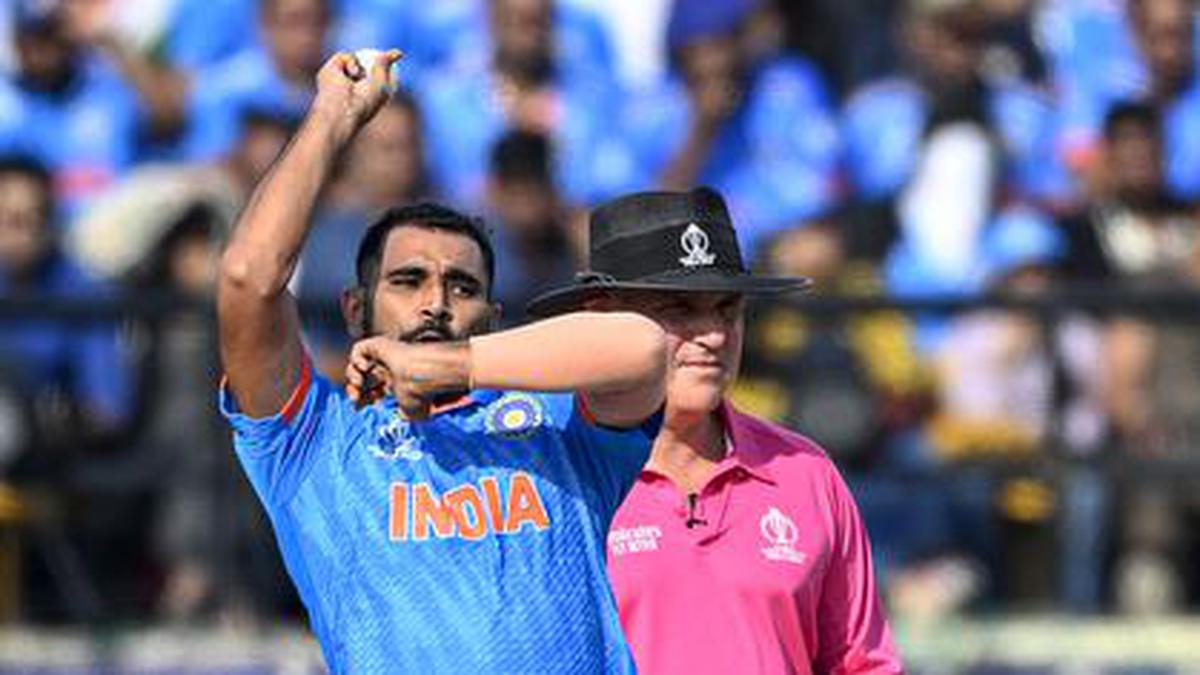
The physics of why Shami’s ‘bolt upright’ seam works magic Premium
The Hindu
Mohammad Shami's seam position and bowling technique led to his success in the ICC Men's ODI Cricket World Cup.
At the 2023 ICC Men’s ODI Cricket World Cup, Mohammad Shami ended with the most wickets – 24 from only seven games. The standout feature of Mr. Shami’s bowling was his seam position, which commentators described as being “bolt upright”. When the bowled ball pitches seam-first into the pitch, the way it bounces back up becomes hard to predict – more so than if the ball is swinging, which batters can read ‘in the air’. Mr. Shami used this unpredictability to get batters into trouble.
In the ways in which it differs from spin bowling, seam bowling is a study in contradiction. In spin, the direction in which the bowled ball spins is the same as that of the arm that is spinning it. But in seam bowling, the bowler’s arm is moving counter-clockwise (when bowled towards the left) while the bowled ball spins clockwise. That is, the bowler’s fingers on the ball impart a backspin.
To achieve the best effect, intuitively, the two fingers can be said to be just to either side of the seam’s centre. So once the fingers impart torque (rotating force) on the ball, the angular velocity imparted by the rotating arm should vanish and the backspin velocity should increase. At this moment, the spin axis will rapidly shift hemispheres, passing through the seam.
To avoid a wobbling seam – which would reduce the chance of the ball bouncing on the seam as well as compromise the aerodynamics of the contrast swing – the spin vector should coincide with the torque vector.
This is why, when a seam bowler imparts torque to the ball, the position of the two fingers matters.
“As a very simple explanation, the spin vector coincides with the torque vector only if the middle finger imparts more force to the ball than the index finger,” Franz Konstantin Fuss, professor and Chair of Biomechanics, University of Bayreuth, told The Hindu. “This can be achieved naturally, since the middle finger is stronger than the index finger.”
However, a 2013 study reported a problem: at the moment the torque is imparted, if the torque vector is at the topmost part of the ball (i.e. if the torque is imparted at the ball’s ‘north pole’), the spin vector wouldn’t have time to move to coincide with the torque, leading to a wobbly delivery. The effect could be corrected by imparting more rotations on the ball. But the researchers found that there was a limit to this because the bowler has a fixed amount of time to impart those rotations: around 50 milliseconds.











